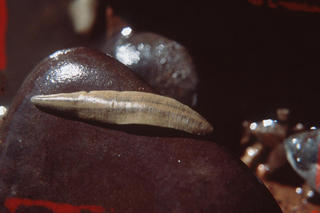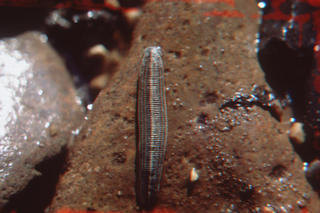Hirudo nipponica
Contents
Nomenclature
Other Names:
Historical Use of Hirudo nipponica
Hirudo nipponica in Traditional Chinese Medicine
Background
Chinese Name (pinyin): Shuizhi
Chinese Name :
Common Name :Leetch
Specific Name : Hirudo
Scientific Name:
Collection : The drug is collected in summer and autumn, scalded to death with boiling water, dried in the sun or at low temperature.
Description : Body of Whitmania pigra: Flattened spindle shaped with a large number of segments, 4 - 10cm long, 0.5 - 2cm wide. Dorsal side blackish brown, slightly convex with black speckles forming 5 longitudinal stripes, ventral side even, brownish yellow, lateral sides brownish yellow. Anterior end somewhat pointed, posterior end blunt with a sucker at the anterior and posterior ends respectively. The anterior sucker inconspicious, the posterior sucker larger. Texture fragile, easily broken, fracture gelatinous, odour slightly stinking.
Identification :
Processing : Wash clean, cut into sections and dry.Scalded: Scald section of Hirudo with talc powder as described under the method for scalding (Appendix ll D) until it becomes slightly expanded.
Action : To eliminate blood stasis and to stimulate menstrual discharge.
Indication : mass formation in the abdomen, amenorrhea due to blood stasis; traumatic injuries
Precautions : Contraindicated in pregnancy.
Dosage : 1.5 to 3 g.
Storage : Preserve in a dry place, protected from moth.
Synonymns for Hirudo nipponica
Patent Medicines and Medicines with Multiple Ingredients that include Hirudo nipponica
Pharmaceutical Information
Chemical Constituents
Evidence or the Use of Hirudo nipponica in the Treatment of Epilepesy
Basic Science
Animal Studies
Cohort, Case-Control and Non-Randomized Trials
Randomized Controlled Trials
Meta-Analysis
1st Five Results: pubmed search

